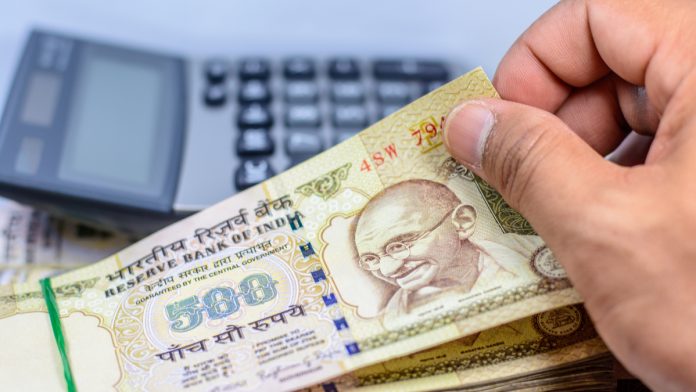- Indian Rupee (INR) falls in risk off-trade
- Indian GDP expected to be 3.5% in fiscal Q4 2021-22
- US Dollar (USD) falls versus major peers
- US PMI data awaited
The US Dollar Indian Rupee (USD/INR) exchange rate is rising on Tuesday after steep losses in the previous session. The pair settled -0.43% lower on Monday at 75.94. At 10:00 UTC, USD/INR trades +0.17% at 77.63.
The Rupee is tracing domestic equities lower in risk off-trade. The Sensex pared earlier gains and trades -0.2% at the time of writing.
The market can’t shake off concerns over slowing global growth and surging inflation. India’s GDP is now expected to have grown just 3.5% in the fiscal fourth quarter 2021-22.
Meanwhile, elevated oil prices continue to pose a risk to the Indian economy. West Texas Intermediate trades around the $110 per barrel mark. Indi’s finance minister said that oil prices around this level could pose a bigger threat to the economy than inflation.
The US Dollar is falling across the board. The US Dollar Index, which measures the greenback versus a basket of major currencies, trades -0.3% at the time of writing at 101.45, extending losses from the previous session.
The US dollar fell again yesterday, extending the selloff from the previous session. The risk-off mood saw investors sell out of the safe have greenback and move into riskier currencies.
Today the selloff in the US dollar continues despite the market mood souring and ECB President Christine Lagarde upped the hawkish language, boosting the euro. The USD often trades inversely to the euro.
Today attention is turning to US PMI releases which are expected to show that business activity in the US grew at a slightly slower pace ion May compared to April. The services PMI is forecast to fall to 55.4, down from 55.6. Meanwhile, the manufacturing PMI is expected to fall to 57.9 down from 59.2.
The level 50 separates expansion from contraction so these figures would suggest that the US economy remains resilient despite rising energy prices and supply chain disruptions.




